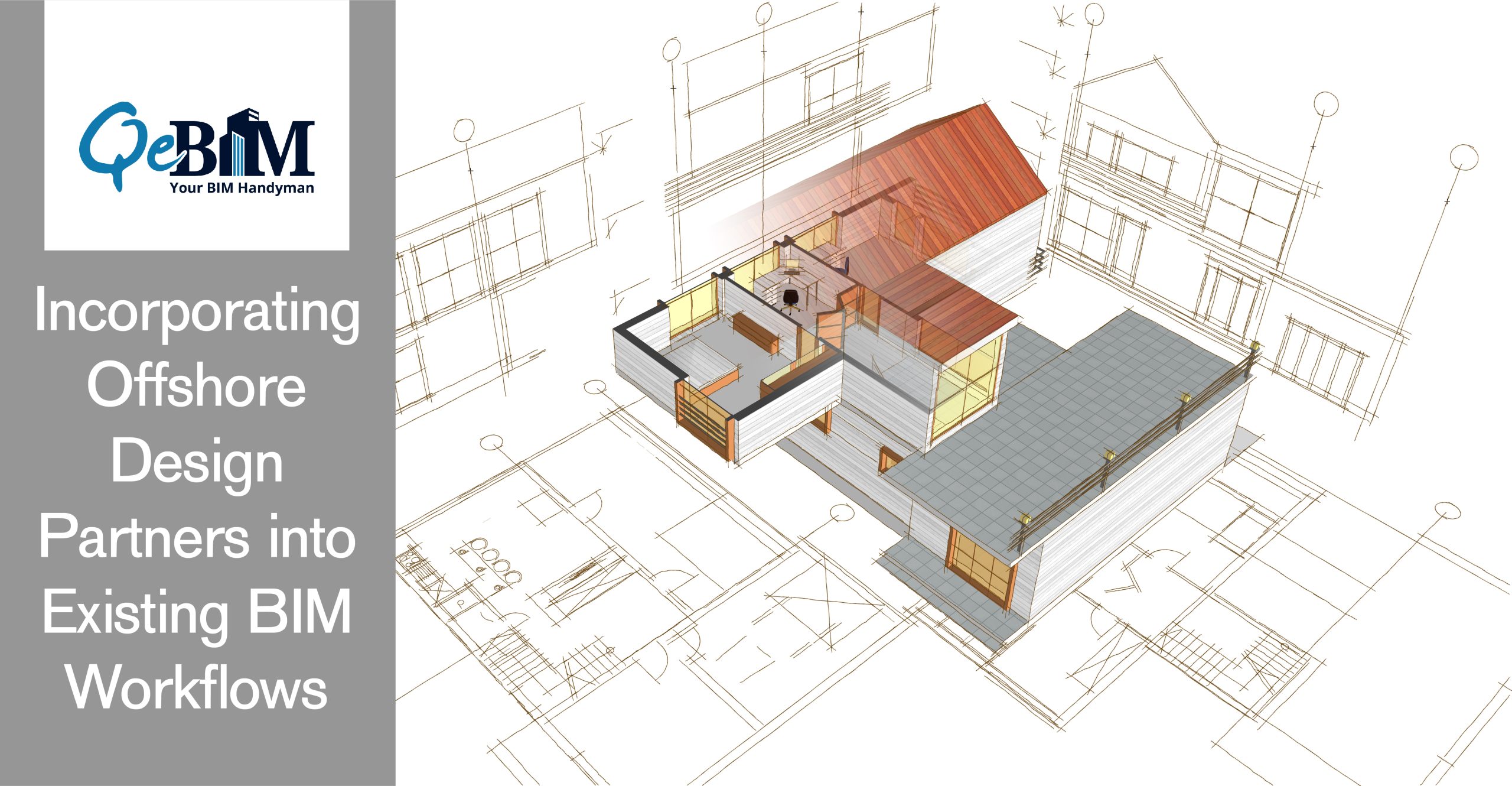Incorporating Offshore Design Partners into Existing BIM Workflows

The Global Market for Building Information Modeling (BIM) was estimated to be valued at $6.6 Billion in 2022. Also, the global BIM market is expected to grow at a compound annual growth rate of 24.3% between 2021 and 2026. Everyone wants a piece of that.
Success only requires an appropriate partner. With today’s 3D BIM Modeling Services workflows, design partners can provide essential advantages, but how do you identify the best partner and what will they need to know? The breadth of expertise and experience a design support partner can offer are two indicators. But what constitutes a BIM workflow in the present era? What potential does BIM now have for a construction project? Let’s peek in to the details about the same.
The following cutting-edge trends are shaping the future of BIM:
- Innovative Cloud Computing
Cloud computing allows the storing and processing of data from remote servers on the Internet rather than utilizing local servers or personal PCs. BIM software integration with the cloud offers real-time changes, simple collaboration, and easy tracking with data accessibility for all users. The same data is accessible to architects, designers, and engineers from many locations, facilitating accurate reporting and model creation. Nowadays, site inspections, contract discussions, document approvals, and design meetings may all take place in the cloud. - Outsourcing has helped increase advancement in 3D Laser Scanning
The size and shape of a structure may be captured by modern 3D laser scanners. Data points are then created using this information. A BIM construction model may then be created using these data points. Time is saved because 3D laser scanning records data more quickly than humans can. By automating data collecting, delays and human mistakes are removed.
3D laser scans may be used in drone surveying to locate sites in both 2D and 3D and measure the distances between them. Drones can gather data from places that are challenging for humans to reach. - An Increase in Prefabrication by using offshore team
Prefabrication of the components that will be placed on site can be made easier by a coordinated BIM model. BIM creates intricate models in a 3D file format suitable for production, which may be utilized directly by CAM machines to produce high-precision, high-quality components. BIM eliminates the requirement for the manufacturer to create CAM data, lowering the likelihood of data mistakes and guaranteeing the production of installation-ready components. The offshore BIM partner can easily create prefabricated models which can be used by the team saving time of inhouse BIM experts. - Using models kept on cloud server rather than physical drawings
Drawings may not be as necessary if models are used locally with cloud computing, and procedures may be changed to accommodate digital delivery. The BIM models created by offshore partners can be used on site by the builder/developer. Building owners may employ digital twins to help them make more informed decisions, while contractors can leverage BIM technology to work more efficiently on the job site by leveraging tablets, digital checklists in the models, or off-site prefabrication. - Process Automation
Thankfully, with the addition of cloud and automation technologies, offshore vendors can offer services beyond labor arbitrage to help BIM Companies scale faster, work smarter, reach new markets, and sharpen their competitive edge. For many businesses, automated workflows provide a competitive advantage. Simple scripting and robotic processes automation can lead to increased usage of visual programming, enabling automation of a wide range of manual and repetitive operations, which is particularly helpful for large projects. A developer or coder is needed to create project-specific scripts or add-ons in order to use scripting. In battling rising global inflation rates and higher pay, automation may provide a project-specific script that saves priceless man-hours and increases efficiency and production. Businesses may anticipate high-quality output while using fewer employees thanks to automation. - Using digital twinning by doing real time changes despite of where the team is based
Digital twins are growing in popularity and are quickly becoming necessary. A Digital twin management is now possible after construction because of developments in FM software, making it a trend that could stick around. With the help of Digital Twin the BIM team and offshore team can coordinate drawings changes in real time. Digital twins are able to gather data on device performance, cutting costs and time, by using real-time sensors to map key operating regions. This ensures proper construction with fewer mistakes. - Procedures That Are Quicker
BIM may thereby speed up workflows while fostering integration and interoperability with other BIM-feeding technologies like AI, VR, and IoT. This aids in the autonomous, error-free performance of processes. As its said that its better to have a team rather than one person managing everything. So employing an additional offshore team will help achieve faster results and more productivity.
Conclusion
Procedures are enabled and improved by BIM with exponentially greater effectiveness. Only BIM-enabled projects will likely be able to use the majority of new technology. BIM technology use will become mandatory, but how will those that adopted it later deal with this trend? To support their efforts, they will want skilled and informed design partners.
Offshore partners, a more and more popular choice for design support, are equipped to handle all of the aforementioned trends while providing precise 3D Modeling Services, architectural design services, and building construction drawings. Certain offshore partners practically excel at delivering BIM solutions due to their years of experience working on a variety of international projects and the ongoing improvement of their abilities and understanding of the market, making them essential parts of the current BIM workflows.